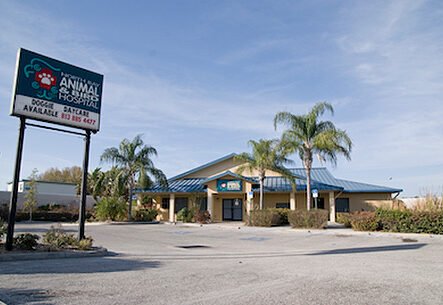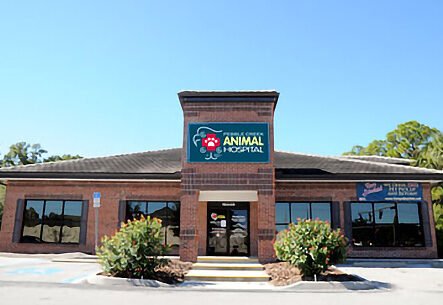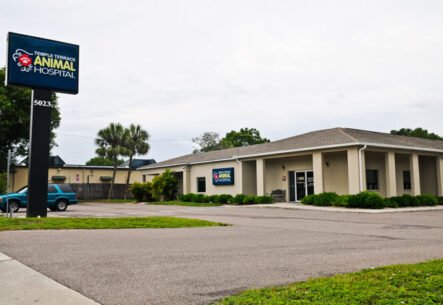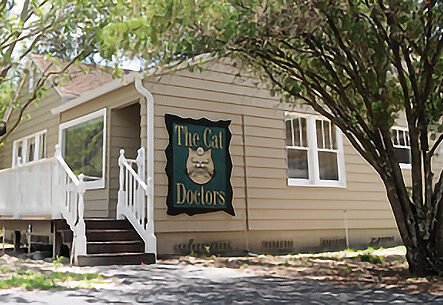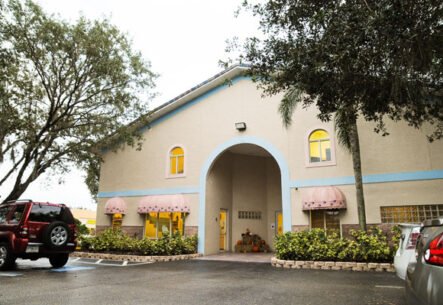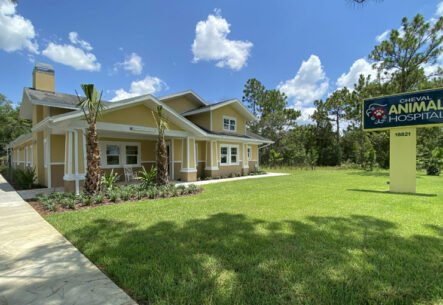Finches
What to expect from your finch
Finches are popular, hardy birds that are easy to maintain. They are generally quiet and have a pleasant, melodious song. Finches do not require the level of attention needed by parrots. Linebreeding and in-breeding to achieve color or morphologic mutations produce a weaker bird with greater potential for genetic abnormalities. A color mutation Lady Gouldian finch, for example, will have a reduced life span in comparison to its wild-type conspecific. Depending on the climatic conditions and the durability of the species, many finches can be maintained in attractive, outdoor aviaries planted with nontoxic vegetation.
Vital Statistics
- Body length: 3-8 inches (7-20 cm)
- (tail can be long in some species)
- Body weight: 10-30 grams
- Age of sexual maturity: 2 months
- Maximum life span: 17 years
Is your Finch a male or a female?
In some finches, there are obvious or subtle appearance or behavioral differences between the genders. Males are generally more brightly colored or elaborately marked than females, particularly during the breeding season. Differences in singing, courtship or nesting behavior may also provide clues to gender. Males usually have melodious songs, perform a dance, hop in various postures and build the nest. The females often have more of a chirp or single-note call and are more passive in the courtship role.
Finches are prolific breeders. The offspring are usually parent-raised, especially in insectivorous species. Society finches make good foster parents for young of other finch species.
What do finches do all day?
Finches are less likely than parrots to develop a bond with family members. However, they are beautiful and interesting birds to observe. Because they may consume up to 30% of their body weight a day in food and may collapse from hypoglycemia if they are deprived of food for even short periods, finches spend a great deal of their day eating. Some of the more exotic finches enjoy live food such as mealworms but have been bred on vegetarian diets.
While finches may be small in size, some species are territorial in aviary situations and others have well developed pecking orders. Self-mutilation, poor body condition and increased susceptibility to disease may be indirect results of aggression in birds that are psychologically stressed because of their low social position.
There is a tendency to provide housing for finches that is narrow and tall in design, but this restricts the birds’ horizontal flying patterns. The finches tend to gather at the same level in the enclosure leading to overcrowded conditions and secondary aggression among the birds.
Are Finches tame?
Finches prefer the company of other finches. They are considered “skittish” and will usually fly away when approached. Some can be finger-trained individually. If capture of a finch is necessary, one useful approach is to remove all perches and turn off the lights before reaching into the enclosure.
How to identify your bird
One method used to permanently identify your finch in case of loss or escape is for your avian veterinarian to inject a custom microchip under the skin. Although individually numbered leg bands or rings may be applied, this method is unreliable and may result in potential damage to the bird.
Why the wings should be clipped
Finches that are allowed unrestricted freedom in the home can encounter numerous physical dangers or toxins; therefore, wing clipping is recommended. The goal of clipping the wings is not to make the bird incapable of flight, but to prevent it from developing rapid and sustained flight and to prevent escape. Additional trimming may be required 8-12 weeks after the start of a molt cycle.
How to keep your finch healthy, happy and safe!
- Allow full flight in a well-protected enclosure.
- Include vegetation or visual barriers (burlap sheets) in the enclosure to provide less dominant birds with an escape area and privacy.
- Avoid introducing new birds into established collections.
- Clip the wings or remove particularly aggressive individuals.
- Feed a fresh, high quality, toxin-free diet formulated specifically for finches.
- Do not over-supplement the diet with vitamins and minerals.
- Provide clean, fresh uncontaminated water.
- Remove and replace food and water containers twice daily to maximize activity in a healthy bird.
- Provide ultra-violet (UV) light in indoor enclosures.
- Avoid spraying the house with insecticides.
Housing for your finch should:
- be as large (wide) as possible.
- be clean, secure and safe and easy to service.
- be constructed of durable, nontoxic material (avoid zinc).
- be constructed of fine gauge wire in an outdoor aviary to prevent access by snakes
- contain multiple perches made of clean, nontoxic, pesticide- free tree branches
- provide multiple feeding locations and nesting sites
- avoid having perches located directly over food containers
- contain small squares of burlap or coconut fiber as safe nesting materials
- exclude accessibility of free-ranging birds to aviaries
Finches are very curious and will investigate anything new in their environment. That is why it is important to prevent their access to:
- ceiling fans
- hot cooking oil
- overheated nonstick-coated cookware
- sandpaper-covered perches
- tobacco and cigarette smoke
- chocolate, avocado, salt, alcohol
- toxic houseplants
- pesticides
- toxic fumes
- dogs, cats and young children
- cedar, redwood and pressure-treated wood shavings
- sources of lead or zinc
- plug-in air fresheners
- heavily-scented candles
- fine thread in nest boxes
What your veterinarian looks for in a healthy finch:
- Dry, open nares
- Clear, bright eyes (no discharge)
- Smooth beak
- Alert, erect posture
- Body free of lumps and bumps
- Smooth, bright feathers without color breaks, transparency or ragged edges
- Even, reptilian pattern on the feet, and nails of appropriate length
Most Common Disorders of Finches:
- Viral diseases
- Feather problems
- Internal parasites
- Egg binding
- External parasites
- Bacterial infections
- Macrorhabdosis
- Malnutrition
- Intraspecific aggression
- Toe or foot necrosis
- Fungal infections
- Chlamydophila
- Mycoplasma
- Fatty liver disease
- Fractures
- Toxicosis
Many common disease conditions in finches are the result of malnutrition. Visiting your avian veterinarian for routine health checks will help prevent many diseases and support you in having a long, satisfying relationship with your finch.
Background information
Free-ranging finches can be found in most areas of the world, although many species are critically endangered because of habitat destruction and human interference. Most finches intended for exhibit or as companion animals are native to Australia or Africa. Field guides of free-ranging species may be helpful to owners wanting to learn more about their finch. The zebra finch is the most popular, while the Lady Gouldian (see front cover) finch is considered the most beautiful. Bengalese (society) finches, which have been domesticated for centuries, are friendly and easy to care for, and breed well in captivity. Java, zebra and Lady Gouldian finches also breed intensively in captivity, and many mutations have occurred. These mutations bear little resemblance to their free-ranging ancestors.
Courtesy of Zoological Education Network
Tampa, FL 33615 (View map)
Tampa, FL 33647 (View map)
Tampa, FL 33617 (View map)
Tampa, FL 33647 (View map)
